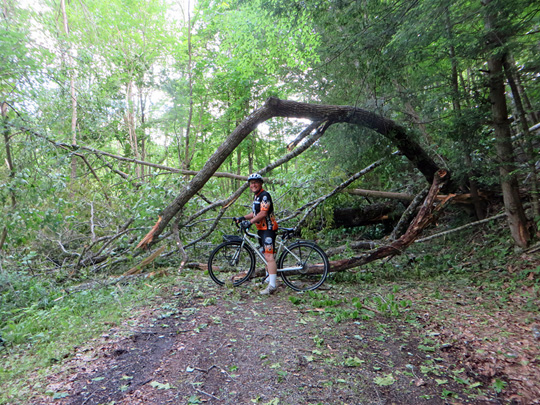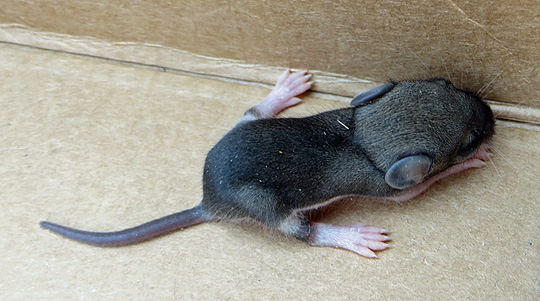Over 2 1/2 days we covered the trail north of our previous sections. We camped at Watoga State Park near the Seebert trail access point.
Monday evening, we had planned to cover the 7 mile segment between Seebert and mile post 39. Our plans hit a snag -- literally.
 |
| About a half mile before our intended turn-around point, the trail was completely blocked by the crown of a very large tree that had fallen over. |
Tuesday we rode from our campground to Seebert and rode the trail up to Marlinton. After having lunch, we rode back to camp.
 |
| Watoga Bridge -- one of three river crossings on the Greenbrier River Trail. My touring bike finally arrived -- it's much better for non-paved trails, but still good for paved surfaces. |
 |
| Flame azalea (Rhododendron calendulaceum) makes a dramatic statement in the landscape. |
On Wednesday, we decamped and packed our gear in Lon's panniers to check out riding in full gear. We drove to Marlinton to start up the last stretch of the trail that ends at Cass. This is a 24-mile segment that we're breaking into two parts.
 |
| Just before leaving Marlinton (and a paved trail) sits the only remaining water tank (for the steam locomotives) on the trail. Lon noted that the spacing of the compression bands shows how the water pressure at the bottom of the tank is substantially higher than it is at the top. |
 |
| The southern entrance to Sharp's Tunnel. |
 |
| Inside the tunnel looking at the north entrance. |
 |
| Small waterfall and pool on Big Run. |
 |
| Lon showing off his fully-loaded bike on Sharp's Bridge. |
 |
| This is a little-used section of the trail, as it is the most remote -- there are few access points and limited services. So it was absolutely astounding that the only other group we met the whole day turned out to be friends of Lon's mom from Childersburg, Alabama. What a small world! |
As this is the most remote section of the trail -- mostly going through state and federal forest lands, we saw quite a bit of wildlife. Three bears crossed the trail in front of us. (Actually, two of the sightings were probably the same bear -- once on the way up and once on the way back.) We also saw deer, woodchucks, geese, and herons. I caught sight of a huge bird flying along the river -- had to have been an eagle. (Since it was all dark, no white head or tail, it was probably a juvenile bald eagle.)




















































